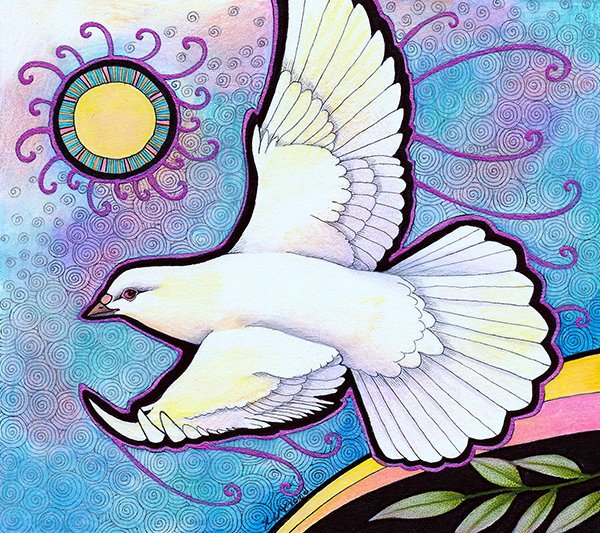White Dove – Higher Powers
Keywords:
Higher powers. Religion. God and godhood. Connection to spirit. Connection to the upperworlds. Messages from the gods or god. Peace and peacetime. A need for hope. Hope. The end of hard times, punishment or judgement. A settled soul. Contentment. Love. Messages. A connection to Inanna. The soul. Working with the shadow in relation to sexuality or war. World peace.
Description:
Also known as the white dove, or white pigeon, this description focuses primarily on the symbolism associated with white doves rather than rock doves in general.
White doves have been favoured in religious iconography from paganism, through Judaism, Christianity and Islam. It is often seen as a symbol of peace and hope, as well as love, the soul, sexuality, war and sacrifice. It has been utilised by military and pacifist groups over the years.
In the New Testament, the white dove has been considered the spirit of god who approached Jesus during his baptism. The white dove is also associated as a symbol of the end of divine wrath, such as when the dove flew from the ark following god’s punishment. In art, it has regularly been depicted alongside baptisms, as well as later being associated with political peace. Around this time, it was also depicted in art that showed conflict, such as art which illustrated Noah and the Ark, Daniel and the lions, Susannah and the Elders and so on. The white dove in Christian iconography is often depicted carrying an olive branch, which is connected to the story of Noah in the Hebrew Bible.
In Judaism, Rabbinic literature interprets the olive leaf as ‘the young shoots of the Land of Israel’ as well as the symbolic message of an animal willing to eat bitter rather than sweet food in the service of deity. The dove here did not symbolise peace, so much as sacrifice, service and love through service, among other things. At this time, it was not an olive branch, but the leaf itself that was the important symbol associated with the dove.
In Islam, doves are respected because they are believed to have assisted the prophet Muhammad by the cave of Thaw’r, in distracting his enemies.
Doves were symbols of Inanna-Ishtar in ancient Mesopotamia, associated with her traits of love, sexuality and war. Objects – including lead doves and frescos – associated with Inanna show dove depictions for thousands of years. Some of the depictions show the dove in place of Inanna, representing her directly. Doves have also been used to symbolise the mother goddess Asherah, Ishtar, and were sacred to Venus, Fortuna and Aphrodite (who gained her connection to doves from Inanna-Ishtar). Doves were sacrificed to Aphrodite during Aphrodisia, so that an altar could be purified in their blood. In Japan, doves are the familiar spirit of Hachiman, deity of archery and war.
White doves are now found as a common icon everywhere. They are recognised in political cartoons, on protest banners and anti-violence protests, at events promoting peace, and have been used to symbolise the promotion of world peace such that even the World Peace Council adopted it as its emblem in 1949. The dove continues to be used readily and familiarly as a symbol of pacifism worldwide.
Was this helpful?
0 / 0